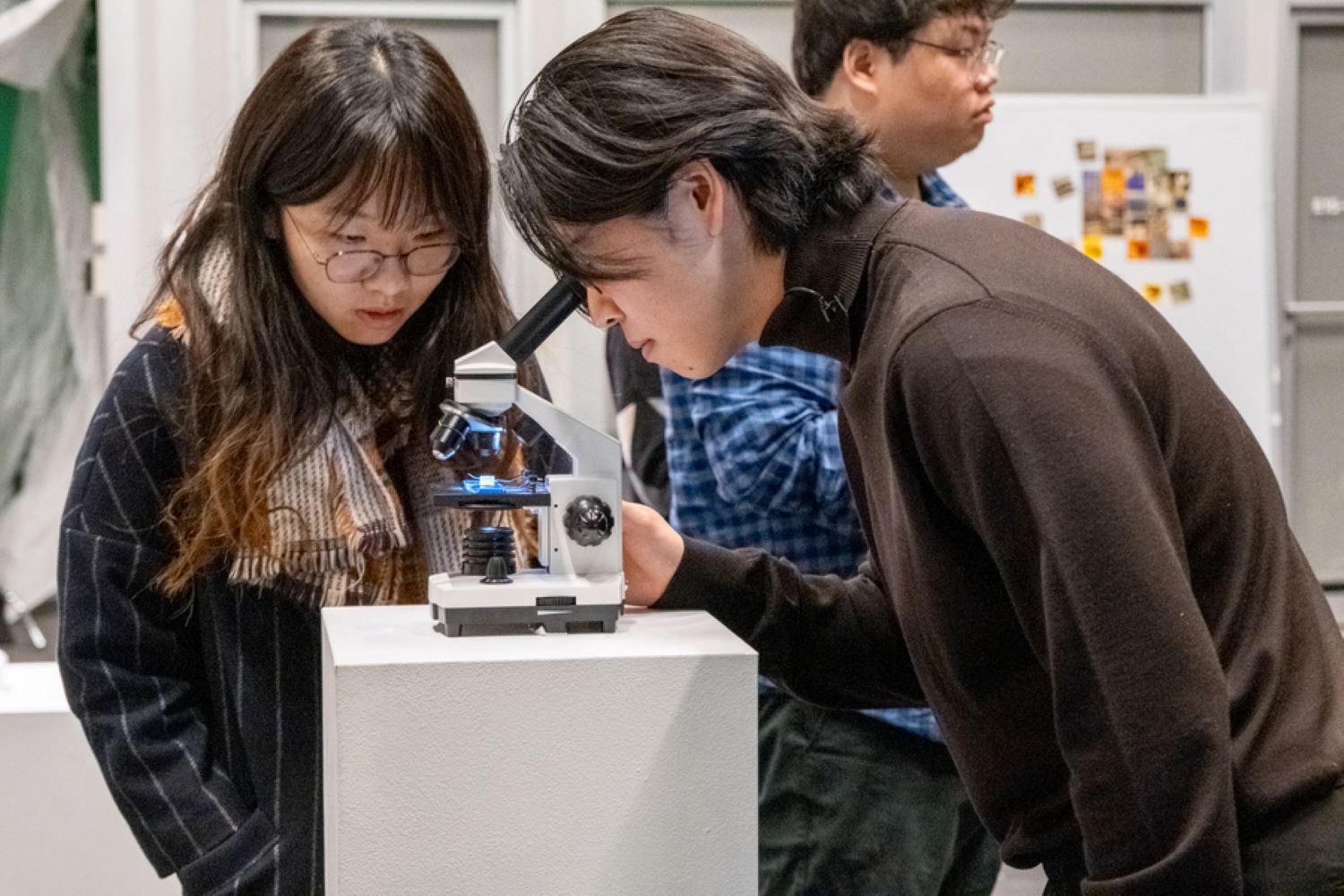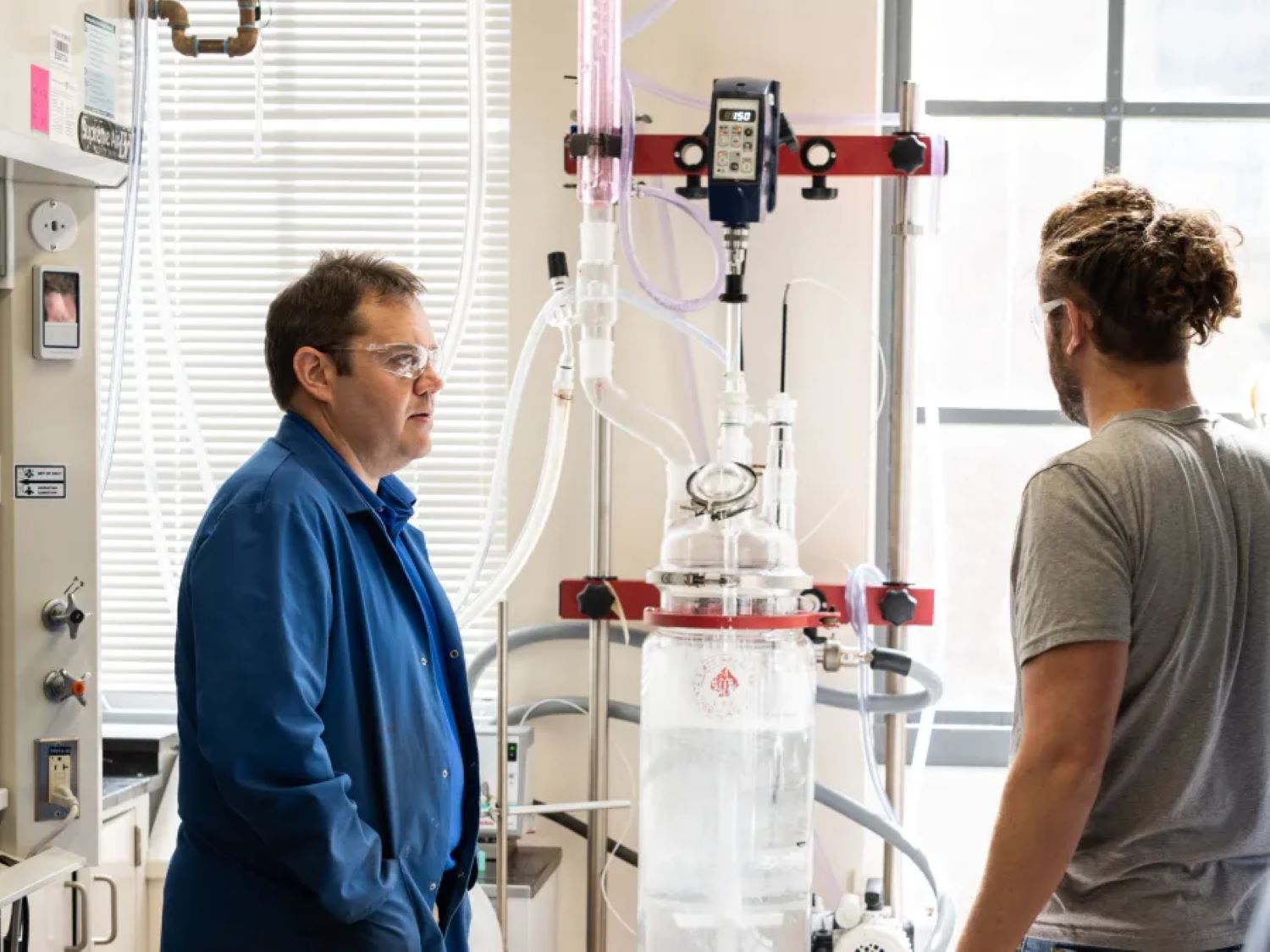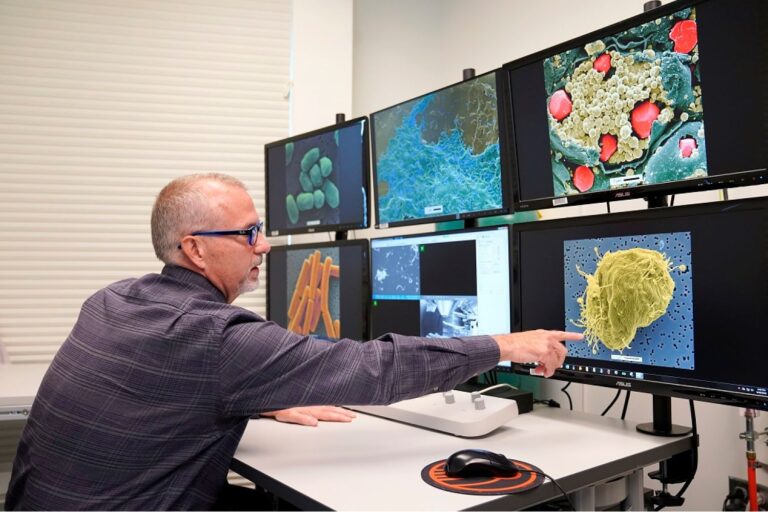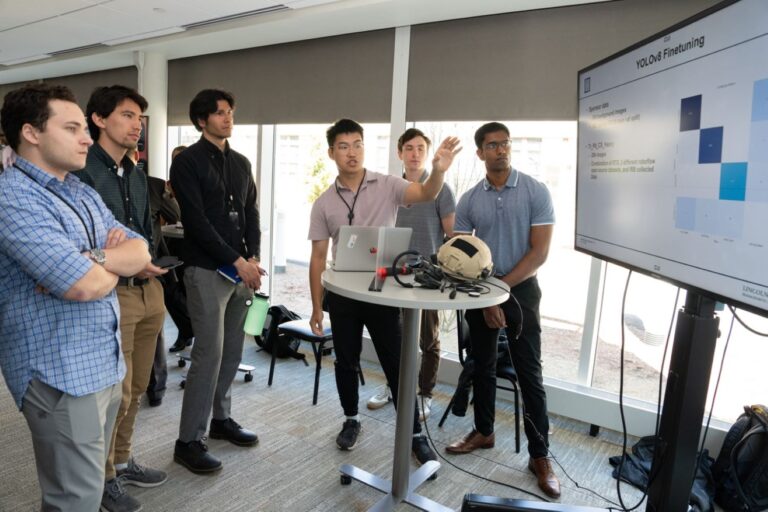From Campus to Combat: How University Research is Revolutionizing Defense Technology
Investing in university research has always been a priority for the Department of Defense (DoD) because universities are important drivers of innovation and technology. These academic institutions offer a unique environment where new ideas and research can be turned into practical solutions that help strengthen national security.
Among the many university-led projects funded by the DoD, some have the potential to transform the future of defense technology. Before we look at the top six most important DoD-funded university research programs, it’s helpful to understand the key benefits these partnerships bring to both universities and the defense sector.
How University Research Impacts DoD: Transformative Innovations
In fact, university-led research projects funded by the DoD have a transformative impact on national security and technological advancements.
One of the most notable impacts is in the field of quantum computing. Research in this field has led to breakthroughs in quantum sensing and communication, which are vital for secure communications and advanced computing. These technologies have the potential to completely change how information is processed and protected.
Universities and research institutions are making major progress in quantum computing, driving the field forward with innovative experiments and breakthroughs. A great example of this is the groundbreaking research on spin waves at Delft University of Technology.
Recently, a group of physicists from Princeton University successfully entangled individual molecules, creating quantum states in which the molecules stay linked, no matter how far apart they are.
In AI-driven autonomous systems, university research has created advanced algorithms that enhance the performance and reliability of autonomous vehicles and drones used for surveillance and reconnaissance, optimizing operations in various defense scenarios.
Advanced materials research has produced new materials that are stronger, lighter, and more durable, improving the performance and longevity of military equipment. For example, innovations in nanomaterials and composites have led to the development of armor that offers better protection while being lighter and more flexible.

Besides, university-led projects in cybersecurity have developed strong measures to safeguard critical infrastructure and sensitive information from cyber threats. These innovations are crucial for ensuring the integrity and security of defense systems in today’s digital age.
For example, the University of Illinois at Chicago is working on a project to create a strong, next-generation solid-state power substation that includes cybersecurity features. The project partners include Iowa State University, the University of Arkansas, the Illinois Institute of Technology (IIT), the Electric Power Research Institute (EPRI), NextWatt LLC, Eaton, and ENER-i.
Human-machine teaming research has focused on enhancing collaboration between humans and machines, improving military operational effectiveness. Advancements in wearable technology and augmented reality systems offer real-time information and support to soldiers.
Finally, research in energy-efficient technologies has led to sustainable solutions that ease the logistical challenges of military operations. Innovations like advanced battery technologies and energy-efficient propulsion systems reduce reliance on traditional fuel sources, making operations more sustainable and cost-effective.
For example, funded by DARPA and developed at the University of Florida, ongoing research is focused on creating Organic LED (OLED) night vision devices, which could replace the traditional vacuum tubes with layers of organic, semiconductor film materials.
History of DoD University R&D Funding: Driving Innovation and National Security
The Department of Defense (DoD) has a long history of supporting research and development at universities.
In 1946, Congress recognized the importance of this support by creating the Office of Naval Research. This was followed by the creation of the Army Research Office in 1951, the Air Force Office of Scientific Research in 1952, and the Defense Advanced Research Projects Agency (DARPA) in 1958.
The DoD and other federal agencies use merit review procedures to select university research programs for funding. When evaluating proposals, the DoD considers the scientific and technical quality of the research, as well as its potential impact on the Department’s national defense mission.
This merit review process helps ensure that the DoD attracts the best talent for defense research and has contributed to the global leadership of America’s research universities.
In the 1950s and 1960s, the DoD increased its investment in university research, driven by the Cold War and the space race. The Defense Advanced Research Projects Agency (DARPA), created in 1958, funded high-risk, high-reward projects often involving university researchers.
Over the years, the DoD has continued to fund university research through programs such as the Congressionally Directed Medical Research Programs (CDMRP), Small Business Innovation Research (SBIR), Small Business Technology Transfer (STTR), and the High-Energy Laser Joint Technology Office (HEL-JTO).
The DoD’s ongoing support has not only driven technological progress but has also helped develop a skilled workforce in science, technology, engineering, and mathematics (STEM).
By funding a diverse range of institutions, including Historically Black Colleges and Universities (HBCUs) and Minority-Serving Institutions (MSIs), the DoD promotes inclusivity and a variety of perspectives in defense research. This long-standing partnership continues to be essential in maintaining the U.S.’s technological edge and national security.
How DoD Funds Drive High-Risk, High-Reward Research
These funds are strategically allocated to support high-risk, high-reward research projects with the potential to lead to groundbreaking advancements. Let’s take a closer look at how these funds are being utilized.
The Multidisciplinary University Research Initiative (MURI) is a special program that really impacts defense research. MURI funds bring together experts from different fields to solve complex problems and speed up research.
For example, a project might combine physicists, engineers, and computer scientists to work on advanced quantum computing. By pooling their expertise, MURI teams can address complex challenges more efficiently, resulting in progress in defense technology.

In addition, The Defense University Research Instrumentation Program (DURIP) funding enables universities to acquire state-of-the-art research equipment, enhancing their capability to conduct cutting-edge research and develop new technologies.
For instance, universities might purchase high-resolution microscopes, advanced computing systems, or specialized laboratory instruments that are essential for pioneering research. Having access to this advanced equipment is vital for researchers to push the boundaries of science and technology, leading to innovations that can strengthen national defense.
The DURIP program is a key investment by the Department of Defense to support the country’s scientific progress. It helps universities carry out cutting-edge research that strengthens the United States’ technological advantage.
At the same time, it ensures that the future workforce in science, technology, engineering, and mathematics (STEM) remains the best in the world.
“DURIP awards build vital research infrastructure, advancing the exploration of knowledge and upholding the cutting-edge capabilities of our academic institutions,” says Dr. Bindu Nair, director of basic research in the Office of the Under Secretary of Defense for Research and Engineering.
The DoD focuses on projects with the potential for major breakthroughs, often involving high-risk, high-reward endeavors that can lead to transformative advancements in defense technology.
Additional funding is directed towards historically Black colleges and universities (HBCUs) and minority-serving institutions (MSIs), promoting a wide variety of perspectives and expertise in defense research, thereby fostering innovation and inclusivity.
Besides, the Defense Advanced Research Projects Agency (DARPA) is known for funding high-risk, high-reward research projects that could lead to groundbreaking technologies.
For example, DARPA’s work on ARPANET helped create the foundation for the modern internet. More recently, DARPA has focused on developing advanced prosthetics and brain-machine interfaces, which have important uses for both defense and civilian life.
Along with that, Defense Established Program to Stimulate Competitive Research (DEPSCoR) seeks to improve the research abilities of institutions in states with less representation, enabling them to carry out competitive defense research. The program offers funding to develop research infrastructure and back high-risk, high-reward projects that can aid in national security.
Additionally, the Historically Black Colleges and Universities/Minority Institutions (HBCU/MI) Program provides funding to historically Black colleges and universities, as well as other minority-serving institutions, to support research in areas critical to national defense.
In addition to fostering diversity in defense research, this program ensures that a broad range of perspectives and expertise are applied to solving complex defense challenges.
By supporting these institutions, the DoD fosters a diverse talent pool and promotes a variety of approaches to addressing complex defense challenges. This inclusivity enhances the research process and ensures that a broad range of innovative ideas and solutions are explored in the pursuit of national security objectives.
Top Six Research Programs Funded by the DoD in 2023
In 2023, the DoD provided a lot of funding to university-led research programs, recognizing their importance in enhancing national security through innovation. Six key research programs below stood out for their potential impact on defense technology.
Each project is led by expert professors at well-known universities and focuses on solving specific challenges the DoD faces.
Let’s take a closer look at these six exciting research programs.
MIT’s $7.5 Million Project to Develop Quantum-Resistant Encryption for Defense
The “Quantum Computing for Secure Communications” project, led by Dr. John Smith at the Massachusetts Institute of Technology (MIT), has received $7.5 million in funding from the DoD.
This research initiative aims to develop advanced quantum computing methods to enhance secure communications for military applications. The primary focus is on creating quantum-resistant encryption techniques that can withstand potential threats posed by quantum computers.

As quantum computing advances, traditional encryption methods may no longer be secure, making it essential to create new ways to protect sensitive military data. Quantum communication uses the principles of quantum mechanics to secure data transmission.
One example is quantum key distribution (QKD), which uses quantum bits (qubits) to create encryption keys that are nearly impossible to intercept without being noticed. This project aims to develop strong communication protocols to keep defense communications safe, even with the rise of new technologies.
Both quantum computing and quantum communications have faced skepticism due to their reliance on the unusual and often counterintuitive properties described by quantum mechanics.
“One of the aspects that I find most rewarding in quantum science and technology research is the strong link between fundamental research and its potential applications,” says Paola Cappellaro PhD ’06, the Ford Professor of Engineering, professor of nuclear science and engineering and physics, and leader of the MIT Quantum Engineering Group.
AI-Powered Autonomy: Stanford’s $7.3 Million Project to Transform Defense Technology
The “AI-Driven Autonomous Systems” project, headed by Dr. Emily Johnson at Stanford University, has been awarded $7.3 million in funding from the DoD.
This innovative research aims to develop sophisticated AI algorithms to boost the performance of autonomous systems in defense operations. The project’s main objective is to enhance the decision-making abilities of unmanned vehicles, improving their reliability and efficiency across different military applications.
Autonomous systems like drones and unmanned ground vehicles are essential in today’s defense strategies. They are used for tasks such as surveillance, reconnaissance, and even combat, helping to keep human soldiers out of harm’s way.
However, for these systems to be effective, they need to make quick and accurate decisions in challenging and unpredictable environments.
“Our main challenge as a field is how do we guarantee that these amazing capabilities of AI systems—driverless cars and pilotless planes—are safe before we deploy them in places where human lives are at stake?” says Anthony Corso, a postdoctoral scholar in aeronautics and astronautics and executive director of the Stanford Center for AI Safety.
The potential applications of this research are vast. Improved autonomous systems can enhance the effectiveness of military operations by providing better situational awareness, reducing response times, and increasing operational efficiency.
Additionally, the advancements made in this project could have broader implications for civilian applications, such as autonomous vehicles and robotics.
Building Stronger, Lighter Military Equipment: UC Berkeley’s Innovative Materials Research
The “Advanced Materials for Defense Applications” project, led by Dr. Michael Lee at the University of California, Berkeley, has been awarded $7.2 million in funding from the DoD.
The research aims to develop new materials that are stronger and more durable for use in military equipment and infrastructure. Advanced materials are needed for modern military applications, as they can provide superior protection and performance while reducing the weight and bulk of equipment.
Dr. Lee’s project at UC Berkeley focuses on developing innovative materials that can endure extreme conditions, boosting the performance of military assets. The research includes creating composites that merge the best qualities of various materials, resulting in exceptional strength and durability.
The project aims to reduce the overall weight of military equipment by focusing on lightweight composites, which can improve mobility and efficiency in the field.
Additionally, these materials are designed to offer enhanced resistance to environmental factors such as corrosion, impact, and high temperatures, ensuring long-term durability and reliability.
University of Michigan’s Cybersecurity Project: Strengthening Defense Networks Against Evolving Threats
Dr. Sarah Thompson at the University of Michigan is leading the “Cybersecurity for Defense Networks” project, which has been awarded $7.1 million in funding from the DoD.
This research initiative is vital as it aims to develop advanced cybersecurity measures to protect defense networks from increasingly sophisticated cyber threats.
In today’s digital age, cybersecurity is a paramount concern for national defense. Defense networks are constantly targeted by cyber adversaries seeking to disrupt operations, steal sensitive data, or compromise national security.

Dr. Thompson’s project addresses these challenges by developing innovative cybersecurity solutions that can adapt to evolving threats.
One of the key aspects of this research is the emphasis on resilience. The project aims to build systems that can not only withstand cyber-attacks but also recover quickly and maintain operational integrity.
The project also aims to develop adaptive security strategies that can adjust to the ever-changing threat landscape. This forward-thinking approach is critical to safeguarding defense networks in an environment where cyber risks are continuously evolving.
Improving Military Efficiency: Stanford’s Research on AI and Human-Machine Collaboration
The “AI-Driven Autonomous Systems” project, led by Dr. Emily Johnson at Stanford University, has received $7.3 million in funding from the DoD.
This research initiative focuses on developing advanced AI algorithms to enhance the capabilities of autonomous systems used in defense operations.
Human-machine teaming is a vital research focus, as it influences the effectiveness of military operations. The project aims to design advanced interfaces and communication systems that enable seamless collaboration between humans and machines.
This includes developing intuitive user interfaces that improve how operators control and engage with autonomous systems. By enhancing these interactions, the project strives to lower the cognitive demands on human operators, enabling them to make faster and more precise decisions, especially in high-pressure situations.
A central focus of this research is the creation of adaptive communication protocols, which ensure that machines can accurately understand and respond to human commands, even in unpredictable and changing environments.
Dr. Brown’s research at Georgia Tech is set to advance the field of human-machine teaming, enabling the U.S. military to fully harness the capabilities of autonomous systems. This work not only addresses the current operational demands but also lays the groundwork for future developments in human-machine collaboration, improving the overall effectiveness and resilience of defense operations.
$6.9 Million Project at University of Texas at Austin: Advancing Energy Efficiency in Defense
Dr. Laura Martinez, a distinguished professor at the University of Texas at Austin, has been awarded a substantial grant of $6.9 million for her groundbreaking project titled “Energy-Efficient Technologies for Defense.”
This initiative is set to revolutionize the way military operations manage energy consumption by focusing on the development of advanced, energy-efficient technologies.
The main goal of Dr. Martinez’s project is to reduce the energy use of military operations. It will focus on finding new ways to use renewable energy and advanced energy storage systems.

By combining these sustainable technologies, the project aims to make military operations more efficient and reliable, helping to create a more secure and eco-friendly energy future for defense.
This project not only highlights the importance of energy efficiency in defense but also underscores the potential of renewable energy and storage solutions in reducing operational costs and environmental impact.









